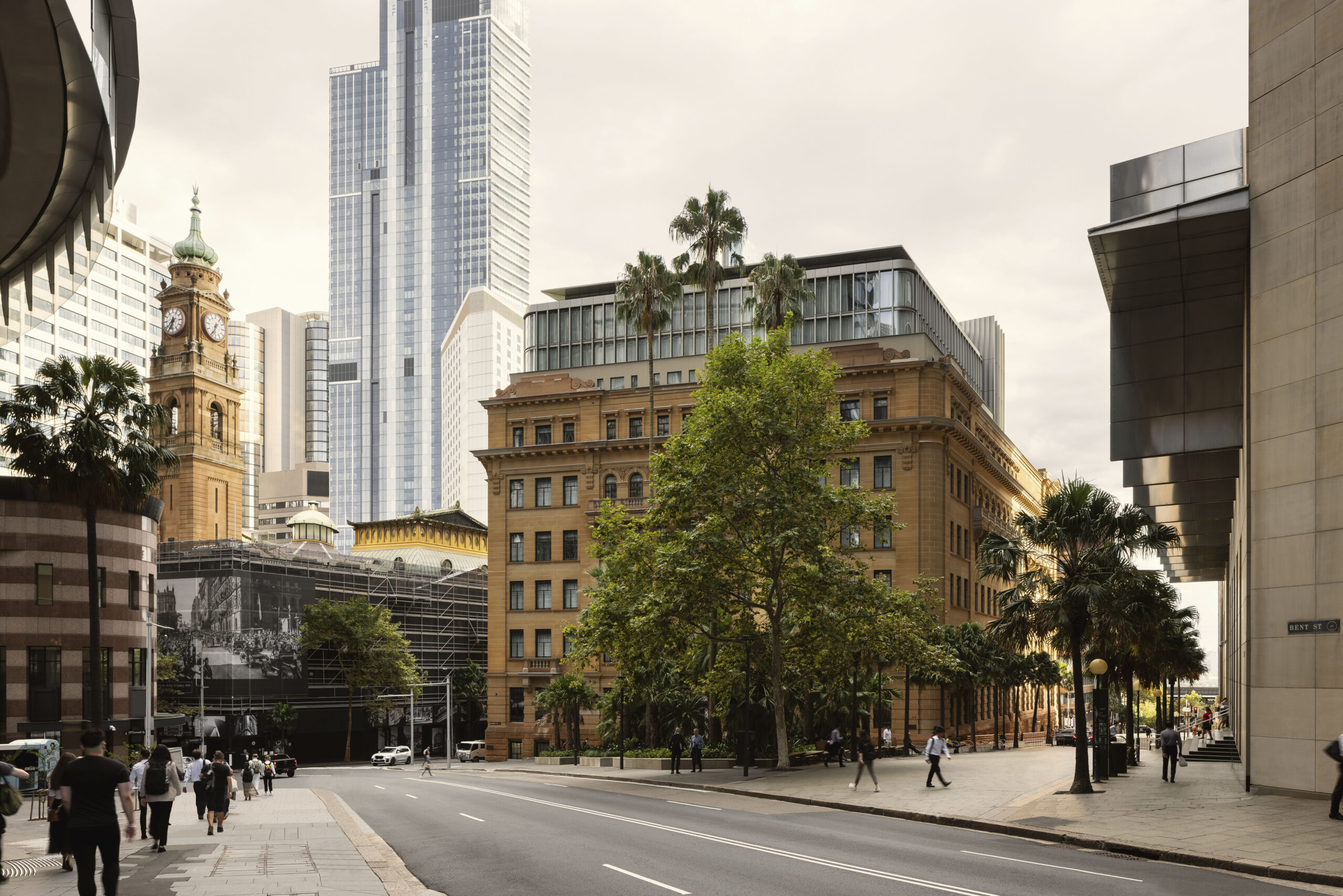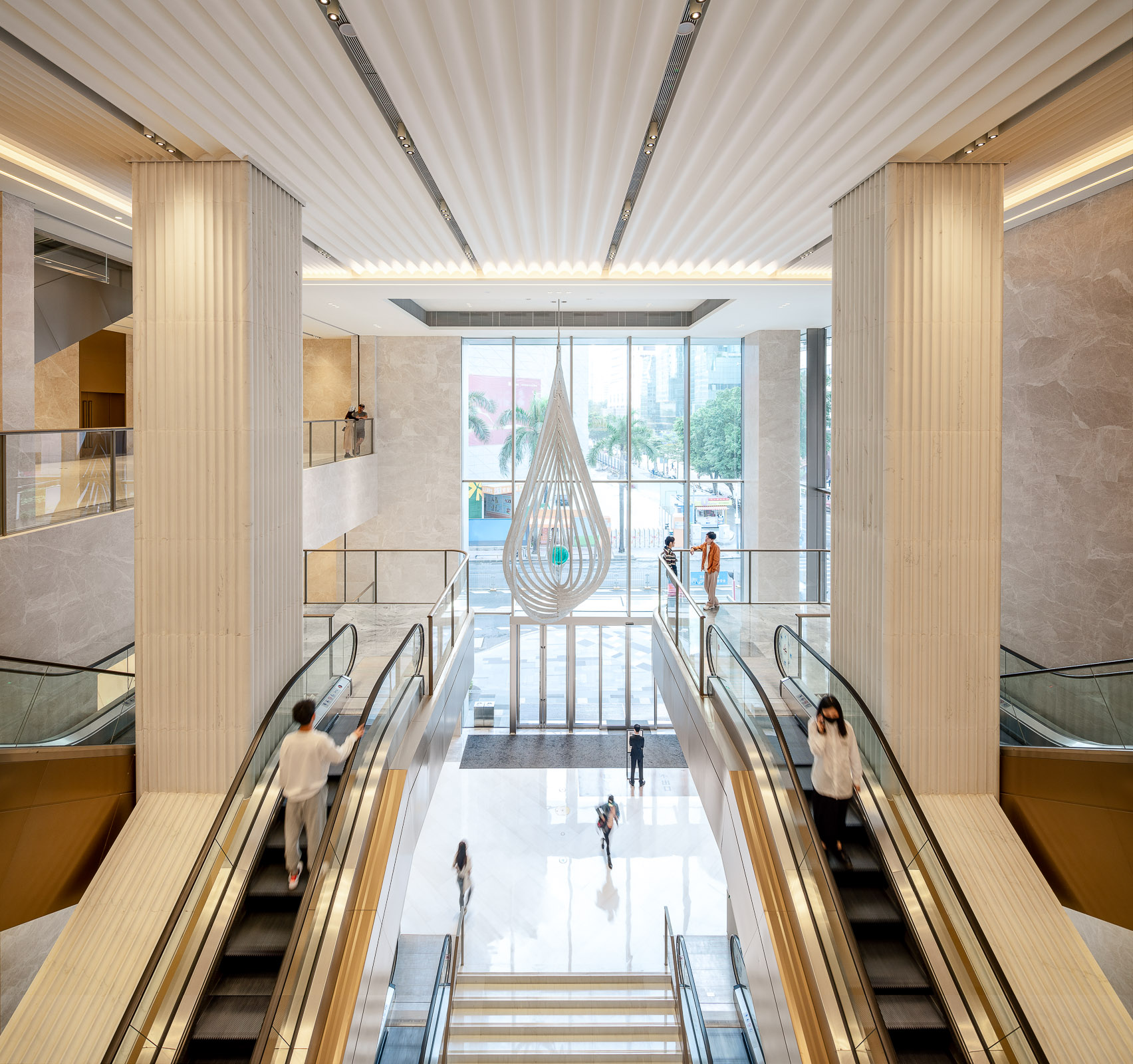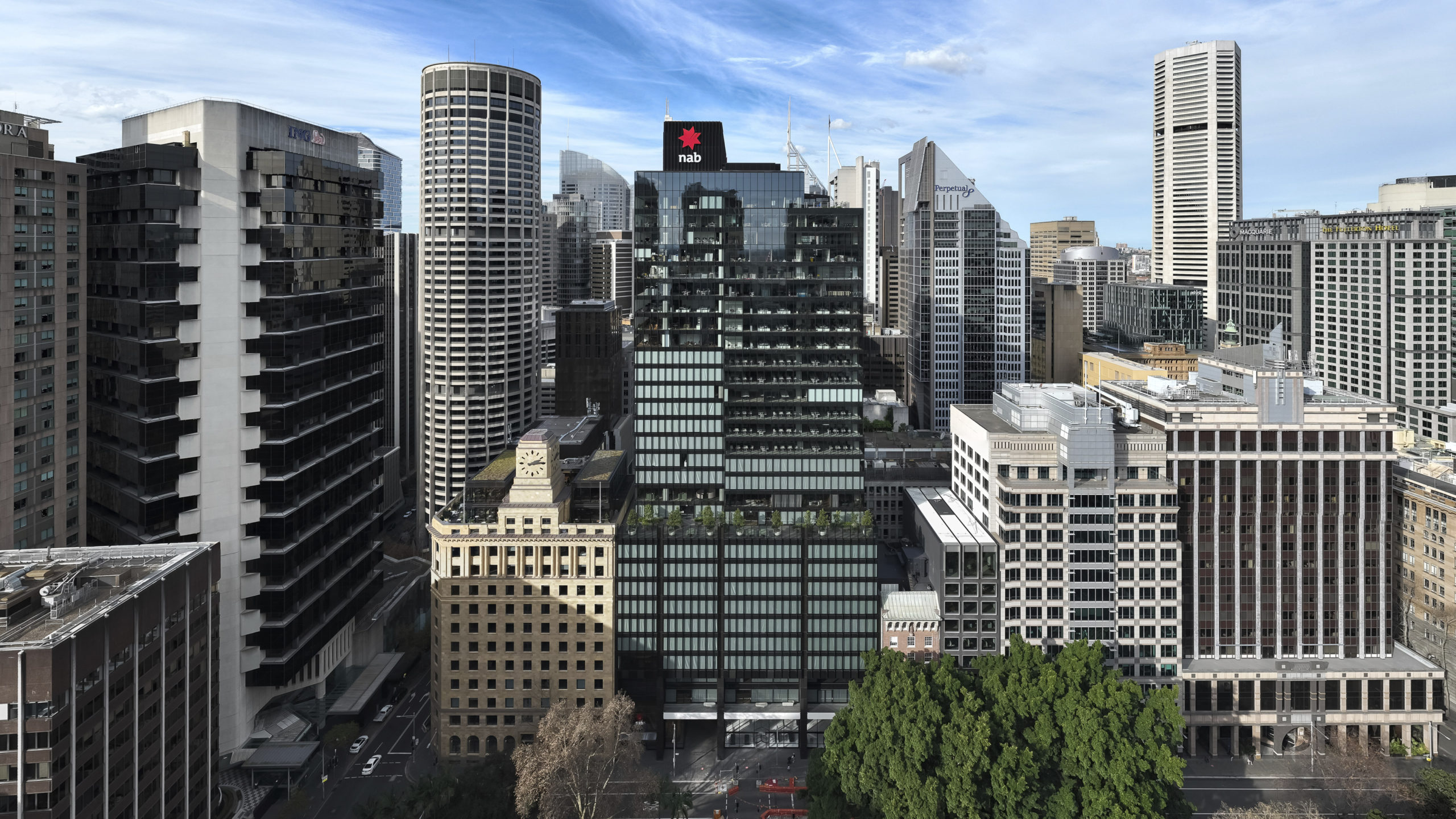









































































































































































































































- Make models: Carlisle Health and Wellbeing Centre
- “Drawing as a method of dialogical design” – an interview with Eugene Tan
- Winner of The Architecture Drawing Prize 2023: an interview with Eldry John Infante
- AI integration at Make: shaping the future of architecture
- Optimising the value of build-to-rent
- Make models: Drum
- 零售设计与酒店设计跨界
- Defining a sustainable workplace – the BCO’s climate emergency challenge
- Discussing exhibitions with Dr Erin McKellar, Assistant Curator (Exhibitions), Sir John Soane’s Museum
- “Spirit is pure, so that’s what I feel here.” – Aunty Margret
- Make models: Seymour Centre
- Hydrogen: Solution or ‘Techcrastination’?
- Q&A with Maker Michelle Evans, project lead on Capella Sydney
- Carbon goggles: looking for facades of the future by reflecting on facades of our past
- Winning the 2022 Architecture Drawing Prize
- Make 模型: 购物中心立面设计竞赛
- Make models: Salford Rise
- Variety in urban living: setting the scene
- Variety in urban living: the challenges and opportunities
- Wilding the City
- Make models: 20 and 22 Ropemaker Street gift models
- Variety in urban living: innovation is key
- 设计再生旅行
- Make models: Jersey South Hill
- Reflections on Make Neutral Day 2023: Part 1
- Reflections on Make Neutral Day 2023: Part 2
- “Let’s do something a bit different”
- A deep dive into an amazing ‘Wunderkammer’
- “My first subject was a house. From then on, I started developing my drawing skills.”
- 《山之境》
- Make models: Brookfield Place Sydney
- Make models: community library model
- “I’ve wanted to be an architect since I was four years old.”
- “I’m learning that architectural designs will need to work in the real world.”
- Make–ReMake
- Embodied carbon of transportation
- From listed buildings to 21st-century schools [2/2]
- Drawing Sydney
- Inspired by “art built” – an interview with Marc Brousse
- Embodied carbon in curtain walls
- Reducing embodied carbon isn’t all about materials
- “Tall buildings mesmerise me.”
- The town centre in five years’ time: Community [1/3]
- Make models: metal etching
- “I’m the first one in my family pursuing architecture.”
- “What can you see behind this building?” – an interview with Fe
- My next getaway
- The town centre in five years’ time: Wellbeing [2/3]
- Make models: 80 Charlotte Street
- 生机建筑:都市森林
- “I want to build things that will explore new depths of the sea.”
- Upfront carbon: how good is good enough?
- The town centre in five years’ time: For everyone [3/3]
- Winner of The Architecture Drawing Prize 2020 – an interview with Clement Laurencio
- Restoring Hornsey Town Hall’s clocks
- A Proposed Hierarchy for Embodied Carbon Reduction in Facades
- From listed buildings to 21st-century schools [1/2]
- Comparing embodied carbon in facade systems
- Building Natural Connections with Energy, People, Buildings
- Designing in the wake of coronavirus
- Musings on The Architecture Drawing Prize 2020
- Living employment
- Bridging the gap
- Stephen Wiltshire
- International Women’s Day 2020
- Inspiring Girls
- Post COVID-19 – What’s next for higher education design?
- Four ways residential design might change after COVID-19
- Make models: The Cube
- One Make
- Atlas – Tech City statement
- Architectural Drawing: States of Becoming
- The Architecture Drawing Prize exhibition reviewed
- ‘Architecture in the frame’ – London Art Fair
- The future of retail and workplace
- Post-COVID
- A Hong Kong perspective on a post COVID-19 society
- Chadstone Link: Making new connections
- Design narratives and community bonds
- Behind the scenes at the 2019 World Architecture Festival
- Drawing on the culture that makes the buildings
- Future modelmakers 2020
- After coronavirus, how can we accelerate change in workplace design to improve connection and wellbeing?
- Improving social ties in our cities
- Q&A with our student modelmakers: Theodore Polwarth
- Q&A with our student modelmakers: James Picot
- The Teaching and Learning Building model by James Picot
- The City is Yours
- Pablo Bronstein
- Encouraging spaces of conviviality
- The importance and passion of heritage in the built environment
- No show, so what next?
- The Madison model by Theodore Polwarth
- Choosing architectural modelmaking
- The Big Data Institute model by Finlay Whitfield
- Q&A with our student modelmakers: Finlay Whitfield
- World Heritage Day 2020
- Make models: Agora Budapest
- Drawing in Architecture
- Draw in order to see
- Our commitment to sustainable design
- Asta House – Local living in Fitzrovia
- Project delivery at 80 Charlotte Street
- Make models: Chadstone Link
- Langlands and Bell – Observing and Observed
- Telling Stories: The power of drawing to change our cities
- What role will hotels play in our society after COVID?
- Sketchbooks: draw like nobody’s watching
- Transparency and a sense of investment
- Honest, in-depth learning
- Leaving a mark
- The hand does not draw superfluous things
- Make models: 20 Ropemaker Street, part 2
- Balance
- The value of the drawing
- Museum for Architectural Drawing, Berlin
- Prized hand-drawings return a building to an organically conceived whole
- Drawing details – technical and poetic
- Draw to Make
- Living with loneliness
- Betts Project
- An update from Sydney
- Combating loneliness in the built environment
- Make models: 20 Ropemaker Street, part 3
- Sydney born and razed
- Make models: 20 Ropemaker Street, part 1
- Architecture and Creativity
- Retail innovation beyond the shop door: Lessons from the USA (part 3)
- Retail innovation beyond the shop door: Lessons from the USA (part 2)
- Retail innovation beyond the shop door: Lessons from the USA (part 1)
- Drawing to an end?
- High-density living in Hong Kong
- Make’s past, present and future
- The Architecture Drawing Prize – Not just another competition
- Community connections
- My time with the BCO
- The call of the wild
- The art of an art historian
- Mary, queen of hotels
- Make models: Portsoken Pavilion
- The Make Charter
- Make models: LSQ London
- Disappearing Here – On perspective and other kinds of space
- Why Brexit will see a glass half-full emptied
- Drawing and thinking
- Make models: Grosvenor Waterside
- The Hollow Man: poetry of drawing
- Above and beyond
- Making shops exciting again: Lessons from the Nordics (part 1)
- Making shops exciting again: Lessons from the Nordics (part 2)
- Plein air in the digital age
- A “Plan in Impossible Perspective”
- Making shops exciting again: Lessons from the Nordics (part 3)
- The future of bespoke HQs
- World-class architecture
- Make models: The Luna
- Drawing architecture
- The future is bright but not the same
- Art Editor’s picks
- Employee ownership
- The tools of drawing
- Trecento re-enactment
- The Architecture Drawing Prize exhibition review
- Lessons on future office design from Asia Pacific
- The human office
- How drawing made architecture
- Advocating sustainable facade design
- Make models: FC Barcelona’s Nou Palau Blaugrana
- Drawing as an architect’s tool
- Are you VReady?
- Cycle design for the workplace
- The Architecture Drawing Prize
- Make models: an urban rail station
- Reporting from Berlin
- City-making and Sadiq
- Hand-drawing, the digital (and the archive)
- Ken Shuttleworth on drawing
- The green tiger
- Stefan Davidovici – green Mars architect
- When drawing becomes architecture
- Make models: Swindon Museum and Art Gallery
- The role of the concept sketch
- Make calls for a cultural shift in industry’s approach to fire safety
- 2036: A floor space odyssey
- Harold on tour
- London refocused
- Hotels by Make
- Full court press
- Digital Danube
- Don’t take a pop at POPS
- The future of architecture – Matthew Bugg
- The future of architecture – Jet Chu
- The future of architecture – Robert Lunn
- The future of architecture – David Patterson
- The future of architecture – Rebecca Woffenden
- The future of architecture – Katy Ghahremani
- Safer streets for all
- The importance of post-occupancy evaluation for our future built environment
- Put a lid on it
- Designing for a liveable city
- The future of architecture – Bill Webb
- Bricks – not just for house builders
- Designing in the City of Westminster
- Rolled gold
- How to make a fine suit
- Responsible sourcing starts with design
- Is off-site manufacture the answer?
- Developing a design for the facade of 7-10 Hanover Square
- Curious Sir Christopher Wren
- Responsible resourcing should be an integral part of every project
- The socio-economic value of people-focused cities

Living employment
‘Living employment’ is a term we’ve coined at Make to refer to the growing push for workplaces that support a more holistic view of employees’ needs and welfare. People’s work and personal lives are increasingly intertwined, and businesses that take steps to support their employees in this can foster a more fulfilled workforce – and, in turn, enjoy greater productivity and improved attraction and retention of talent.
We’ve been exploring how to design buildings that support this ethos and help our commercial clients build healthier, happier workplaces. The aim is to create attractive, dynamic environments that offer value through their desirability for both workers and the local community at large.
As part of this, we’ve been collaborating with City Office Real Estate (CO–RE) to explore the demand for and value of these ideas. We’re exploring the following questions with a range of employers and commercial building occupiers:
– How can we respond to a changing economic environment where business employment strategies are constantly being reinvented?
– What are the longer-term trends in people’s relationship with their workplace and employers’ attitude towards employees?
– How will growing populations, changing climates, expanding cities and evolving communication technology affect people’s attitudes towards their personal lives and the workplace?
– How can we design buildings and places that promote happiness among the people who use them?
From our conversations, it has become clear that incorporating ‘non-workspace’ in or alongside commercial buildings is essential to improving people’s daily lives at work. By complementing workspace with areas for relaxation and study, as well as amenities like crèches, food and drink offers, shops, entertainment, learning centres, even laundries and banks, we can support both employers and employees with their responsibilities outside of the office, thereby helping renew their focus during working hours.
We’re striving to apply living employment principles in a way that transforms workplaces into destinations – bustling hubs of employment that offer valuable benefits beyond the fabric of the office space.
One way this could be achieved is prioritising the spaces between the leased office spaces, like lobbies, communal floors, roof terraces and the ground floor. It’s worth considering the public areas right out to the street and the urban townscape too, along with the existing amenities nearby. The offer just outside a building is often the deciding factor for a business when determining where best to locate itself.
With office buildings opening themselves up this way, there’s scope for them to become far more ‘public’ buildings, welcoming non-employees to use some of their facilities and promoting corporate transparency. This openness and free flow of people are key to creating low-maintenance, dynamic, flexible centres for commerce.
Many big technology businesses already embrace this model. Because they operate as communities of specialists, depending on the support of smaller businesses and outsourced developers, the need for close relationships, shared knowledge, support and common resources has led tech giants like Google to rethink their workplaces as community hubs that promote exchange and employee-centric welfare. On a smaller scale, co-working spaces offer the potential for start-up businesses to share resources within the same building, capitalising on the opportunity to interact with and learn from each other.
Taken to its logical extreme, a living employment hub that mixes workspace with amenities could evolve into a fully mixed use development that also provides places to live. The workplace would no longer be the sole driver of value in this scenario; a broader view of service, quality, convenience and amenity would be taken into account.
We should consider longer-term opportunities for creating dynamic workplaces where businesses and their employees can thrive.
Part of the solution is changing attitudes towards planning use classes. Shopping, domestic services, catering, entertainment and professional services can no longer be neatly and distinctly defined as separate entities. Likewise, new models for living increasingly blur the boundaries between home ownership, renting and hotels. We need to design buildings to be less tied to specific uses and better able to adapt to different types of commercial activity, thereby supporting employment in all forms.
Consider the possibility of the primary elements of a building’s structure and facade being designed to be equally useful for commercial, trade, residential and hotel uses. This would require a ‘loose-fit’ approach – for example, generous ceiling heights that allow residential and office uses to operate on a normalised structural format. In any case, we’d need to avoid short-term savings that meet minimum standards but rule out future flexibility. While there is a capital cost involved to designing buildings as long-term assets, a longer lifespan will give the final product greater value in the end.
In our socially dynamic and technologically enabled society, the nature of property and ownership is fundamentally changing. People must be kept at the heart of design, particularly workplace design. It’s crucial for workers and businesses alike that new office buildings consider their service provision and not just their space provision.
Article extracted from Make Annual 15.


























